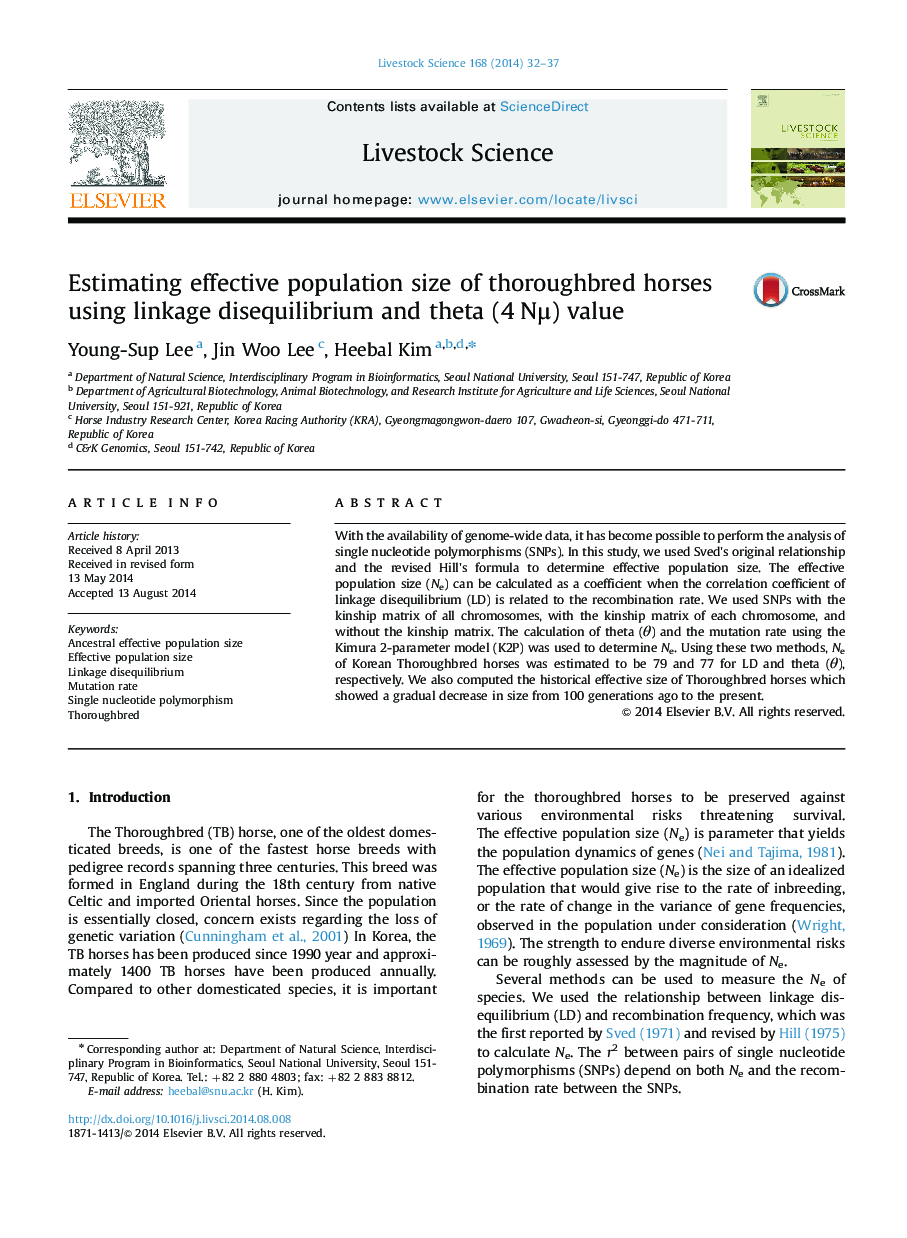| Article ID | Journal | Published Year | Pages | File Type |
|---|---|---|---|---|
| 2447262 | Livestock Science | 2014 | 6 Pages |
•We estimated the effective population size of Korean Thoroughbred horses.•Ne was 79, 77 using LD and theta theories.•The LD method used the Sved׳s equation.•The theta method used the Watterson׳s theta estimator and Kimura 2-parameter model.
With the availability of genome-wide data, it has become possible to perform the analysis of single nucleotide polymorphisms (SNPs). In this study, we used Sved׳s original relationship and the revised Hill׳s formula to determine effective population size. The effective population size (Ne) can be calculated as a coefficient when the correlation coefficient of linkage disequilibrium (LD) is related to the recombination rate. We used SNPs with the kinship matrix of all chromosomes, with the kinship matrix of each chromosome, and without the kinship matrix. The calculation of theta (θ) and the mutation rate using the Kimura 2-parameter model (K2P) was used to determine Ne. Using these two methods, Ne of Korean Thoroughbred horses was estimated to be 79 and 77 for LD and theta (θ), respectively. We also computed the historical effective size of Thoroughbred horses which showed a gradual decrease in size from 100 generations ago to the present.
